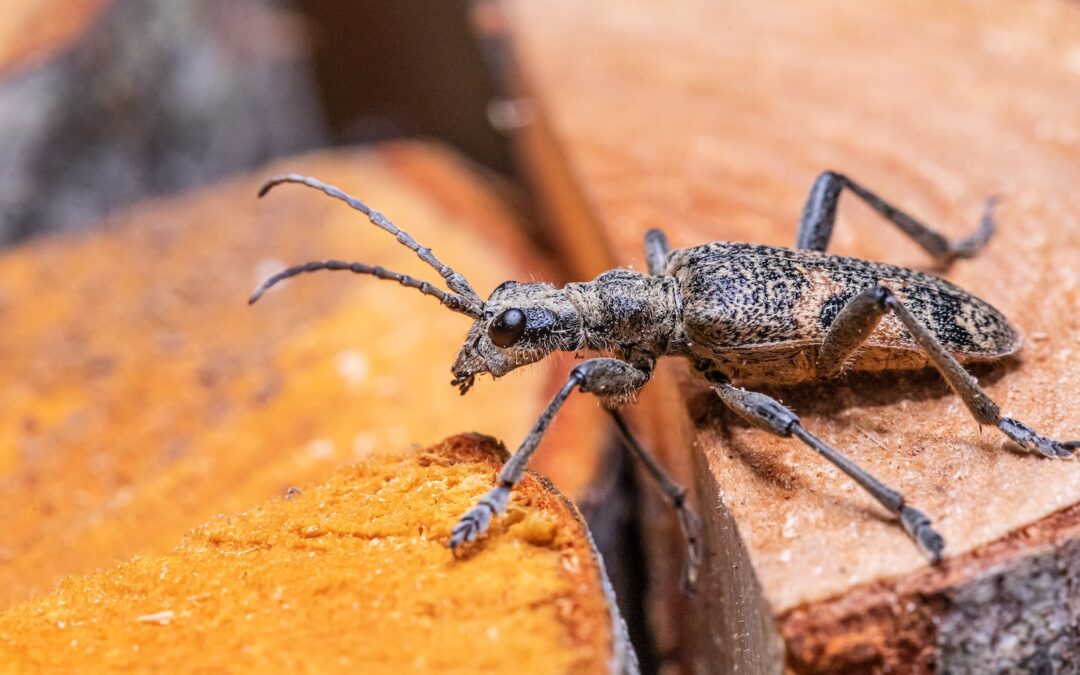Introducing
Self-storage is an important way to store and protect items that are not regularly used – but it’s also important to keep these spaces pest-free. Pests can cause serious damage to stored items, requiring costly and time-intensive repairs. That’s why proper preventive pest management steps are important in self-storage facilities. Here are 6 tips for preventing and managing pests in self-storage:
1. Maintain the Facility
Conduct Regular Inspections
Regular inspections of the self-storage facility can help identify any signs of pest infestation that may be occurring. During inspections, look for signs of pest activity such as gnaw marks on wood or other materials, droppings, nesting material, and odors.
Keep Areas Clean and Dry
Moisture encourages the growth of mold, which attracts pests like ants, cockroaches, and rodents. With that in mind, keep storage units and common areas as dry and clean as possible. Vacuum regularly, and do not leave food or moisture-rich materials out in the open.
2. Limit the Pests’ Access
Seal Gaps and Openings
Rodents and other pests can get inside the facility through cracks, holes, and other small openings. To prevent these pests from getting in, seal any gaps around windows, doors, pipe penetrations, and other entry points. Doing this will create a physical barrier that pests will not be able to navigate around.
Secure Storage Units
Make sure the storage units are completely sealed, with no openings that could be used to get in or out. To ensure these units are properly sealed, use weather seals and door seals made of heavy-duty materials. Also, make sure the units are locked when storing items inside them.
3. Implement IPM Techniques
Use Pest Control Products
The use of pest control products can help manage the pest population around the self-storage facility. This may include products such as traps and bait to kill pests, as well as products to deter pests from entering the facility. Always make sure to use products that are safe and effective for the particular pests that have been identified.
Use Monitoring Devices
Insect and rodent monitoring devices such as glue boards, sticky traps, and electronic sensors can be used to detect the presence of pests in the facility. These devices can provide an early warning of possible infestations, allowing action to be taken before the infestation gets out of hand.
4. Reduce Food Sources
Store Food Properly
Pests are drawn to food, so it’s important to store food properly. This includes properly storing food items such as pet food, birdseed, and grain-based products. These items should be placed in sealed containers that pests cannot access.
Eliminate Standing Water
Standing water is another inviting source of food for pests. To prevent this, make sure to inspect the facility for any sources of standing water and eliminate any that may be present. This may include fixing leaky pipes, cleaning clogged drains, and more.
5. Eliminate Harborages
Keep Areas Clean and Dry
Many pests like to hide in dark, moist areas. To prevent pests from using these areas as harborage, inspect the facility and remove any clutter or debris that may be present. This can help reduce the pest population as well as make it harder for them to hide.
Use Fumigation Services
Fumigation services can also be used to eliminate harborages in the self-storage facility. Fumigation can help kill pests that have been hiding in the facility, as well as help prevent them from coming back in the future.
6. Utilize Professional Services
Partner With Professionals
Partnering with a professional pest control service can provide insight into pest management and help in the prevention of infestations. Professionals can determine the type of pest and recommend appropriate treatments for the situation. They can also conduct regularly scheduled inspections and fumigation services as needed.
Get Expert Advice
The final tip for preventing pests in self-storage is to get expert advice. Professionals in the pest control industry can provide information on best practices and strategies for keeping pests under control. They can also answer any questions you may have about pest control and prevention in the self-storage facility.
People Also Ask
What is the best method for controlling pests in storage units?
The best method for controlling pests in storage units is to maintain a clean and dry environment, seal all potential entry points, and use traps, bait, and pest control products to manage the population.
How can I prevent rodents from entering my storage unit?
To prevent rodents from entering your storage unit, you should inspect the unit for any small openings and seal off any holes or cracks. Additionally, use weather seals or door seals made of heavy-duty materials to ensure the unit is completely sealed.
Are there any natural pest control methods that can be used in storage units?
Yes, there are natural pest control methods that can be used in storage units. These include using traps and bait with natural ingredients, such as essential oils and herbs, and using beneficial insects to reduce pest populations.
What is Integrated Pest Management (IPM)?
Integrated Pest Management (IPM) is an environmentally conscious pest control strategy that uses methods such as preventive measures, monitoring, and pest control products to manage pest populations.
How often should pest control inspections be conducted?
Pest control inspections should be conducted on a regular basis, typically every 3-6 months. The frequency of inspections can vary depending on the type of pest and the level of infestation.
Final Words
Pests can cause a huge amount of damage to stored items in self-storage facilities, so it’s important to take steps to prevent and control infestations. Implementing the 6 tips outlined here can help ensure the safety of stored items and the facility as a whole. If you have any questions or would like advice on pest control, it’s best to consult with an experienced professional.

